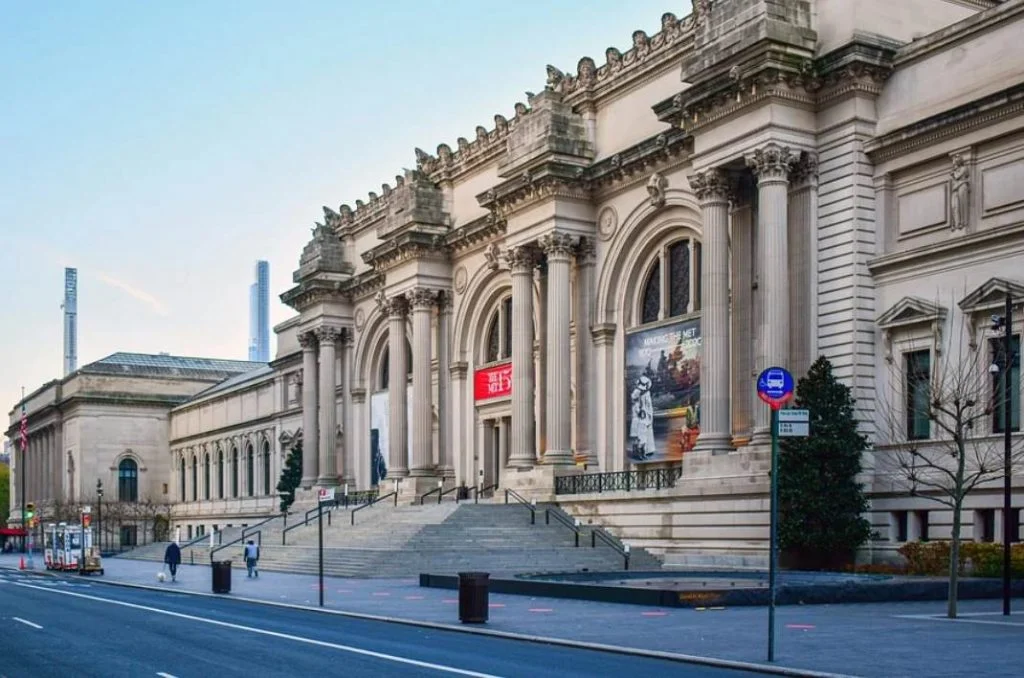Did you know that one of the most iconic American paintings ever completed wasn’t painted by an American artist?
The fascinating depiction of a surprise attack that secured an important victory during the American Revolutionary War is a world-famous work of art.
It was painted by a German-born artist who moved to the United States as a child and who became one of the country’s most renowned history painters.
In this article, you’ll discover some of the most interesting facts about Washington Crossing the Delaware by Emanuel Leutze (1816-1868), an amazing masterpiece for several reasons.
1. It was painted by a German-American artist during the early 1850s
Washington Crossing the Delaware is a huge historic painting by Emanuel Leutze, a man who was born in the German city of Schwäbisch Gmünd.
Back then this was part of the state of Württemberg in what was then the German Confederation. Today, this is the state of Baden-Württemberg in the southern part of Germany.
He moved to the United States as a child in 1825 and the family initially settled in Fredericksburg, Virginia, before moving to Philadelphia.
He initially made a living as a portrait painter as a teenager and later moved back to Germany. In his home country, he studied at Kunstakademie Düsseldorf.
He made his name as an artist with a work titled “Columbus before the Council of Salamanca” (1841). He completed his most famous work about a decade later in 1851.

2. It depicts an idealized version of George Washington’s surprise attack

The composition of the painting is centered around George Washington (1732-1799), the man who led the Continental troops across the Delaware River on the night of December 25-26.
This surprise move was the prelude to the Battle of Trenton the next morning in which Washington successfully led the Continental Army to a victory against the Hessian Forces.
These German soldiers fought for the United Kingdom and about two-thirds of them were captured during this brief but important battle.
This success enhanced the low morale of the Americans at the time and it strengthened the belief that fighting for independence was important.
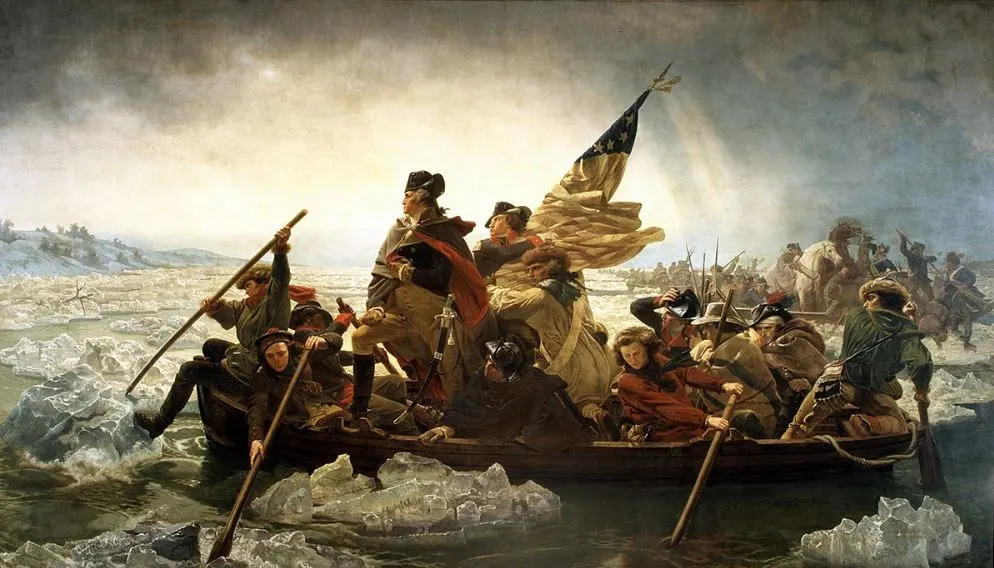
3. Leutze painted 3 versions and the original one was destroyed during WWII
What’s remarkable about this painting is that it was so popular that Leutze painted 3 versions. He completed the initial version in 1850 but this became damaged following a fire in his studio.
He restored it and completed this in 1851. The second version, the painting described in this article, is a full-scale replica of the original version.
The original painting was part of the collection of the Kunsthalle in Bremen but was destroyed during an Allied raid on the city in 1942.
Leutze also painted a third, much smaller version, and this hung in the reception area of the White House between 1979 and 2014. Today, it’s part of a private collection (more on this later).
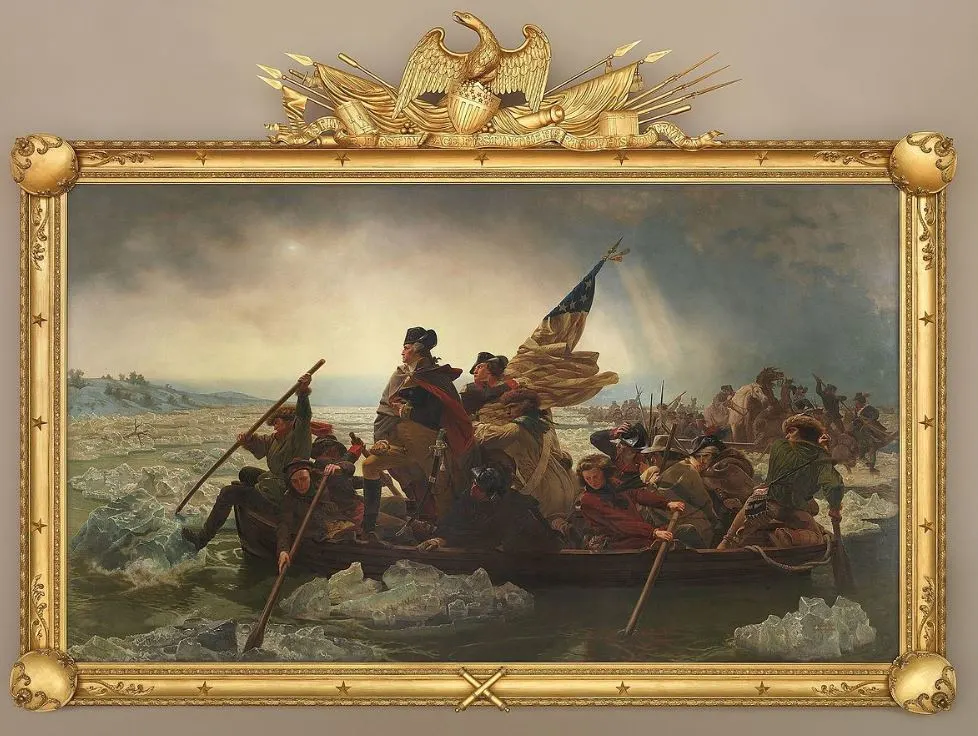
4. Leutze became inspired to paint this work when he was in his home country
Emanuel Leutze was in Germany when one of the most important moments in European history happened, the so-called “Revolutions of 1848.”
The French Revolution of 1830 inspired Eugène Delacroix to paint his iconic “Liberty Leading the People,” a painting at the Louvre that highlight Marianne, the personification of France.
So this concept wasn’t new, but the widespread nature of the revolutions in the late-1840s was pretty shocking.
Leutze’s aim was to bring the concept of liberal reforms to European leaders by using the American Revolution as an example.

5. The men in the boat represent the American colonies
Leutze figured that the best way to emphasize the unity of the United States was to paint people of all backgrounds inside the boat of George Washington.
A man wearing a Scottish bonnet is sitting right next to a man of African American origin in the front of the boat.

The right side of the painting incorporates a magnificent sense of foreshortening perspective to depict the row of boats that cross the Delaware River simultaneously.
It’s here that you can see various other men who represent the people who lived in the United States at the time, including several Westerners and Native Americans.
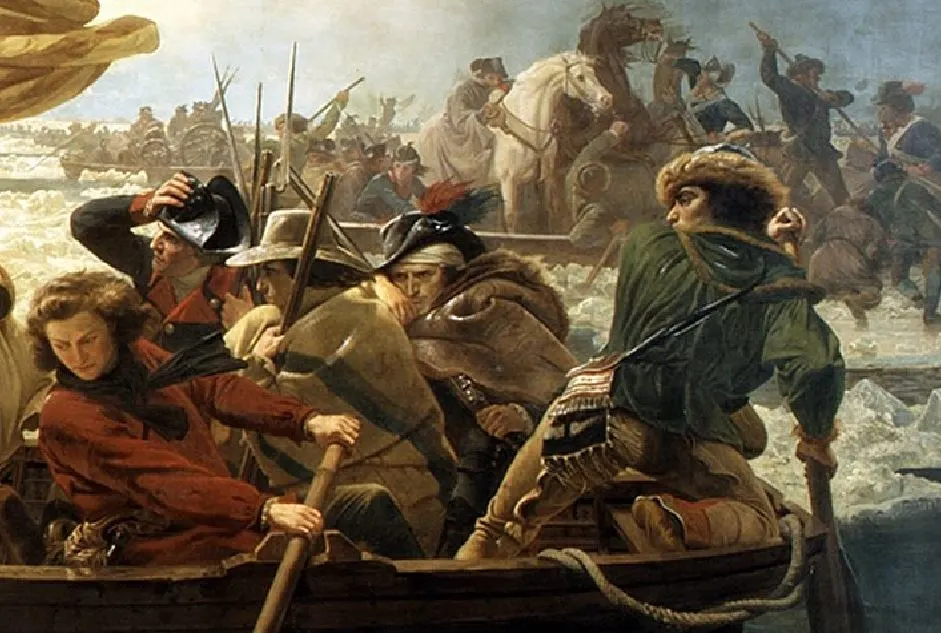
6. There are several historic inaccuracies, including the depicted flag
Despite the fact that this is one of the most famous paintings in American history, it features several historical inaccuracies.
First of all, I understand that Leutze wanted to highlight the strong nature of George Washington who bravely led his troops across the Delaware River.
It’s virtually impossible, however, to stand the way he does inside such a rocky boat. This is especially true considering the chunks of ice that float around on a cold winter’s night.
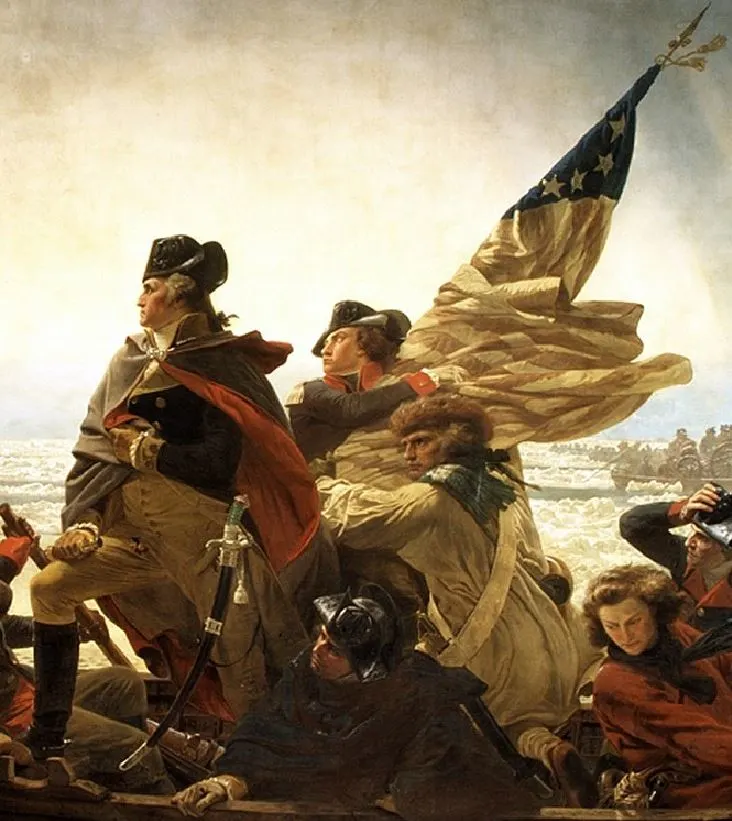
Secondly, the most notable error is the flag, which is, in fact, an early version of the Betsy Ross flag. The design of this flag was only created on June 14, 1777, several months before this event happened.
The correct flag at the time was the Grand Union Flag, the flag that was hoisted by Washington on January 1, 1777, as the first national flag.

7. How big is Washington Crossing the Delaware by Emanuel Leutze?
The first and second versions of this painting were exactly the same in size, while the third version is significantly smaller.
Washington Crossing the Delaware by Emanuel Leutze is an oil on canvas painting that has dimensions of 378.5 × 647.7 centimeters (149 × 255 inches).

8. Where are Leutze’s paintings located today?
The original version was destroyed and the third version was once hung at the reception area of the White House in Washington D.C.
It was later acquired by the Minnesota Marine Art Museum where it hung for nearly a decade before being put up for auction in 2022.
The same price? The estimate of $15-$20 million was shattered by a whopping $45 million!
So where can you find the second version?
This painting is part of the collection of the MET in New York City and is one of the museum’s most amazing attractions.
